“Like Bob Dylan, the authentic American genius is a synthetic personality. They’re all hybrids, hence, inevitably, charlatans. It’s the chameleon nature of the American hero—the confidence man, the hustler. His solution to the question of identity is that of the three-card monte player. Anyone looking for the Grand Unifying Theory of Bob is just going to have to keep looking.”—David Dalton, Who Is That Man? In Search of the Real Bob Dylan
Bob Dylan’s not an easy man to pin down. He confounds the public, at one moment a sage and a prophet decrying materialism and war, and the next an eccentric aging musician doing gigs for Victoria’s Secret. His music is equally unpredictable, at times so insightful it resonates on the deepest level of your being, and the next barely tolerable—especially when, as John Jurgensen describes it in a piece for the Wall Street Journal, it is couched in his “always-raspy voice, now deteriorated to a laryngitic croak.”
 For almost half a century, Bob Dylan has been a primary catalyst in rock’s shifting sensibilities. He has starred in and been the subject of major films; his work is taught in over 200 college courses; and few American artists are as important, beloved, and endlessly examined as he is. Yet he remains something of an enigma. Who, we ask, is the “real” Bob Dylan? Is he Bobby Zimmerman yearning to escape Hibbing, Minnesota, or the Woody Guthrie wannabe playing Greenwich Village haunts? Folk Messiah, Born-again Bob, Late-Elvis Dylan, Jack Fate, or Living National Treasure? In Who Is That Man? In Search of the Real Bob Dylan (Hyperion, 2012), David Dalton, cultural historian, screenwriter, novelist, and a founding editor of Rolling Stone, paints a revealing portrait of the rock icon, ingeniously exposing Dylan’s chameleon-like persona.
For almost half a century, Bob Dylan has been a primary catalyst in rock’s shifting sensibilities. He has starred in and been the subject of major films; his work is taught in over 200 college courses; and few American artists are as important, beloved, and endlessly examined as he is. Yet he remains something of an enigma. Who, we ask, is the “real” Bob Dylan? Is he Bobby Zimmerman yearning to escape Hibbing, Minnesota, or the Woody Guthrie wannabe playing Greenwich Village haunts? Folk Messiah, Born-again Bob, Late-Elvis Dylan, Jack Fate, or Living National Treasure? In Who Is That Man? In Search of the Real Bob Dylan (Hyperion, 2012), David Dalton, cultural historian, screenwriter, novelist, and a founding editor of Rolling Stone, paints a revealing portrait of the rock icon, ingeniously exposing Dylan’s chameleon-like persona.
Dylan’s life in music, song, film and art, as Dalton recognizes, is really a metaphor for America. “Like most American geniuses, he’s a synthesizer,” Dalton writes. “America is a polyglot: a patchwork, a hodgepodge, a crazy quilt pieced together by our imagination. A work of fiction.”
For those who came of age in the Sixties, however, Bob Dylan was the voice crying in the wilderness—the conscience of a generation. He set to music what many were struggling to put into words and in so doing, he gave the civil rights movement some of its greatest anthems. Classic protest songs such as “Blowin’ in the Wind,” “The Times They Are A-Changin’,” “Desolation Row,” “Chimes of Freedom” and “Masters of War” set the mood for a youth-driven cultural revolution whose anthems were about peace and love and fighting oppression. In fact, as Dalton writes, Dylan “was seen as an antihero ready to lead an army of freaks to pull down the walls of Babylon, and amphetamine is sprinkled over Dylan’s mid-’60s albums like volcanic dust.”
Powered by idealism, the Sixties generation purported to reject materialism, helped put an end to racial segregation, opposed the military establishment and its never-ending wars, brought down a president (Richard Nixon) and essentially put a halt to the Vietnam War. And Dylan provided the soundtrack for all of it. As the legendary Judy Collins observed:
We wanted so much to change the world; we all wanted to stop the war; we wanted to stop social injustice. They were good causes because they had an innocence about them. But there was something about what Dylan was doing, a certain sophistication, that deepened our understanding of what’s really going on here. Bob dragged us from literary immaturity and made us grow up emotionally. He dragged us into the world of alliteration and metaphor in a way that nobody else could do. He was our higher education.
From the beginning, Dylan’s songs taught that there is an incestuous relationship between authoritarianism, social evils, militarism, and materialism and that the solutions to corruption are spiritual. Dylan proclaimed the existence of a God who brings judgment, a “hard rain” as one of his songs puts it, on those who perpetrate evil. Dylan’s topical songs mixed the power of Beat poetry with the folk style of Woody Guthrie and Pete Seeger—all with prophetic overtones. Although his songs often incorporated real events, they went beyond mere journalism to the moral underpinnings.
Bob Dylan was one of the few pop singers of any real influence who clearly articulated political ideas in his music. But, as if in midstream, Dylan abandoned politics. Perceptive enough to realize that politics is never a real answer, Dylan knew the times were not changing as he had expected.
The initial sign that Dylan was becoming disillusioned with the left and the political movements of the Sixties came late in 1963. Only days after the country had been traumatized by the assassination of John F. Kennedy, Dylan was invited to the grand ballroom of the Hotel Americana in New York to accept an award for his work in the civil rights movement. The result was a disaster. An intoxicated Dylan felt alienated from his adoring audience, which included many aging activists from the left-wing movement. He first appeared to insult them, saying, “It’s not an old people’s world.” He then simply baffled them with his speech, in which he spoke about race, class and the establishment.
I look down to see the people that are governing me and making my rules—and they haven’t got any hair on their head—I get very uptight about it…. And they talk about Negroes, and they talk about black and white…. There’s no black and white, left and right to me anymore; there’s only up and down and down is very close to the ground. And I’m trying to go up without thinking of anything trivial such as politics…. I got to admit that the man who shot President Kennedy, Lee Oswald, I don’t know exactly where—what he thought he was doing, but I got to admit honestly that I, too—I saw some of myself in him…. I saw things that he felt in me—not to go that far and shoot. [Boos and hisses] You can boo, but booing’s got nothing to do with it. It’s a—I just, ah—I’ve got to tell you, man, it’s Bill of Rights is free speech….
Dylan’s drunken rant reflected his growing view that all people are victims of those who control the system and that even the African-American hierarchy had compromised to gain political power. The speech caused an uproar, and Dylan left the hall amid a mixture of boos and applause.
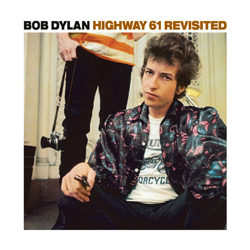 “I don’t want to write for people anymore. You know—be a spokesman,” Dylan told Nat Hentoff in 1964. “From now on, I want to write from inside me.” Thus, by 1965, Dylan had abandoned the civil rights campaign and moved beyond political activism. In fact, although he had participated in key civil rights events, Dylan was not present for the final and most grand civil rights event where black and white protesters and musicians came together—the march from Selma to Montgomery, Alabama, in March 1965. There, over 5,000 people sang Dylan’s “The Times They Are A-Changin.’”
“I don’t want to write for people anymore. You know—be a spokesman,” Dylan told Nat Hentoff in 1964. “From now on, I want to write from inside me.” Thus, by 1965, Dylan had abandoned the civil rights campaign and moved beyond political activism. In fact, although he had participated in key civil rights events, Dylan was not present for the final and most grand civil rights event where black and white protesters and musicians came together—the march from Selma to Montgomery, Alabama, in March 1965. There, over 5,000 people sang Dylan’s “The Times They Are A-Changin.’”
On the musical front, Dylan abandoned the acoustic folk sound and became a rocker. By the time he went electric with his breakthrough album Bringing It All Back Home, it was clear that Dylan had assumed a new role. He had abandoned the shabby rambling-man look and assumed the countenance of a pained and scrawny ascetic.
Painfully obvious by now was the fact that drugs were driving the content of much of the rock songs of the Sixties—including Dylan’s. Dalton writes: “And in the USA of 1965 Dylan knew you needed drugs to be able to penetrate the fog of lies, barbecues, suburbs, and security.” However, while most of the Sixties generation would soon choose flower power, love and the fallacy that drugs were going to create a new society, Dylan saw the apocalypse approaching. A pivotal song is his 1965 masterpiece “Desolation Row,” which cries for humanity to renounce materialism or face destruction and alienation.
Now at midnight all the agents
And the superhuman crew
Come out and round up everyone
That knows more than they do
Then they bring them to the factory
Where the heart-attack machine
Is strapped across their shoulders
And then the kerosene
Is brought down from the castles
By insurance men who go
Check to see that nobody is escaping
To Desolation Row.
“Desolation Row” brought Dylan to the level of the great apocalyptic poets such as T. S. Eliot. Moreover, Dylan became a prophet whose main concerns are moral, not political. And he condemns virtually all he sees.
Dylan’s conversion to Christianity in the late seventies didn’t soften his views on the nature of the world. As late as 1991, when asked about the apocalypse, Dylan replied: “It will not be by water, but by fire the next time. It’s what is written.”
Unfortunately, in recent years, we’ve seen less and less of Dylan the prophet and more of Dylan the self-promoter and entertainer. Yet not even his appearance in a Victoria Secret’s commercial, surrounded by scantily clad, winged lingerie models, or reports of his being picked up by police after being mistaken for a wandering vagrant managed to diminish his impact on those who have taken his music to heart.
Strangely, however, Dylan’s ever-changing façade has inspired many. In a tribute piece for AARP in honor of Dylan’s 70th birthday on May 24, 2011, Bono shares:
When I was 13, Bob Dylan started whispering in my ear…it was a hoarse whisper, jagged around the edges, not-too-plain truths…ideas blowing in the wind about how the world could be a better place if we could just get it out of the hands of the hypocrites. When I was 16, Bob Dylan whispered in my ear about how the real enemy was not flesh and blood, but of a spiritual nature. At 21, with the slow train of faith having picked up a little too much speed, I stood at a religious crossroads and heard “Every Grain of Sand” stop time. When I got married at 22, Bob Dylan was whispering in my ear about love and infidelity. When I had my first child at 29, Bob Dylan wrote “Ring Them Bells” and “What Good Am I?” When I ran out of gas in the late ‘90s, I had Time Out of Mind to hold on to. When the world crumbled around two shining towers, and New York had its two front teeth knocked out, I had Love and Theft to hang on to. Now, having faced 50, I’m realizing I knew much more then than I do now. I’m returning to the brutal truth that “The Times They Are A-Changin’” — but you don’t have to let them change you. In short, all my life, Bob Dylan has been there for me.
Still, despite the glowing tributes, Dylan received his fair share of criticism for “playing it safe” during his 2011 concerts in China and Vietnam. “Bob Dylan, whose rasping songs of protest were once the definitive clarion-call for activism and dissent, belted out an unmistakably neutered version of his world-famous repertoire last night as he made his concert debut in Beijing”, reported Leo Lewis for The Times. “Although ground-breaking and heartily welcomed by fans, the long-awaited concert bore the hallmarks of compromise with authority—precisely the sort of accommodation the 69-year-old singer railed against with such venom in his earlier days.”
Mind you, this is the same man who walked off the Ed Sullivan Show in 1963 rather than submit to a censored song list. Then again, perhaps Dylan the activist who once claimed that a hero was “someone who understands the degree of responsibility that comes with his freedom” has simply given up the fight and wants only to be Dylan the musician. As he once remarked, “Songs can’t save the world. I’ve gone through all that.” After all, why should Dylan be any different from the rest of his once idealistic generation, many of whom have now become part of the very establishment they once opposed?
As Daniel Blackburn points out in the Spectator:
 Western governments have largely ignored Beijing’s clampdown, which began in February as democratic activism spread from Cairo to Chinese websites. No trade sanctions or UN Resolutions are being issued here, just stern communiqués. Given that it’s nearly 50 years since Dylan purposefully stopped being the ‘voice of conscience,’ his reticence does not come as a shock… Why should Dylan do what we are too timid and politic to do? Besides, what could he achieve? Dylan’s words might be welcome to some Western ears, but he’s just one man selling records. He does not command divisions, even in the metaphorical sense. Human rights violations in China are for governments to challenge. Perhaps Dylan’s silence expresses that.
Western governments have largely ignored Beijing’s clampdown, which began in February as democratic activism spread from Cairo to Chinese websites. No trade sanctions or UN Resolutions are being issued here, just stern communiqués. Given that it’s nearly 50 years since Dylan purposefully stopped being the ‘voice of conscience,’ his reticence does not come as a shock… Why should Dylan do what we are too timid and politic to do? Besides, what could he achieve? Dylan’s words might be welcome to some Western ears, but he’s just one man selling records. He does not command divisions, even in the metaphorical sense. Human rights violations in China are for governments to challenge. Perhaps Dylan’s silence expresses that.
But should we really be surprised that any entertainer, no matter how Herculean they may appear, is in the end a human being like you and me? After all is said and done, Bob Dylan is and has always been an entertainer. As David Dalton tells us:
Godlike as he is, Dylan, like everybody else in the entertainment business, was subject to the three-year cycle of fame. In the ‘60s and on through the ‘70s, Dylan reinvented himself brilliantly, along with revolutionary new musical genres. But you can only reinvent yourself (and the music) when you’re on the beam; then you can multiply yourself as often as you like. Otherwise it’s just changing sets and costumes—and the outfits of the last three and half decades have left a lot to be desired: funny getups, top hats, plastic cowboy hats, gloves, hoodies, fake beards, and wigs.
Bob Dylan’s influence has been immense and his mythology will continue to haunt the cultural landscape long after he bites the dust. That influence—quirks and all—is brought to life by David Dalton in Who Is That Man? In Search of the Real Bob Dylan. David took some time out of his busy schedule to answer a few questions about the enigmatic one.
John W. Whitehead: Dylan grew up in Hibbing, Minnesota—an out-of-the-way place. Many devout Jews live there. Dylan was a Jew. In 1954, at his bar mitzvah, young Bob read from the Haphtarah which is a selection of readings from Jewish prophets. He read in Hebrew. Bob talked of his moral duty of being a Jew. How in the world do you get from reading the Torah in 1954 to writing and singing “Blowin’ in the Wind” in the early Sixties?
David Dalton: In America, we are a culture of outsiders, and Dylan is basically a double outsider. He was a Jew from a very remote part of America. Thus, Dylan’s view of the United States is of somebody who had almost a foreign vision. I mean, America is something he desperately wanted to be part of and identify with, yet he himself was part of an estrangement that has colored everything he has done. Dylan basically made himself an American through the reams of music he produced. At the same time, however, there actually is an interesting phenomenon in the folk movement—that is, there were a lot of Jews who were folk singers. Even from the 1940s on, the folk movement was thought to be a way of becoming part of the American community. This was through communal singing and involvement in the folk movement.
JWW: But it wound up being a critique of America in the end.
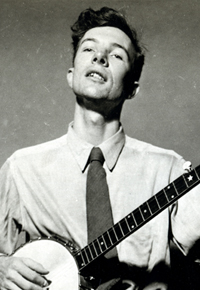 DD: Yes, of course. At a certain point, folk music and the protest movement merged. Very specifically, in the early 1960s, it merged with the Civil Rights movement, led by people such as Pete Seeger. Seeger, of course, was part of the Weavers who were part of the first folk movement. They had some hit songs.
DD: Yes, of course. At a certain point, folk music and the protest movement merged. Very specifically, in the early 1960s, it merged with the Civil Rights movement, led by people such as Pete Seeger. Seeger, of course, was part of the Weavers who were part of the first folk movement. They had some hit songs.
JWW: “Goodnight Irene” and all those songs.
DD: Yes, and others. Those songs were not overtly political. The model, however, for all of this, of course, was Woody Guthrie. Guthrie had “This Machine Kills Fascists” written on the face of his guitar. It was Guthrie who fused American folk music with protests against union busting, opposing war mongers and so on.
JWW: And the corporations.
DD: And the corporations.
JWW: Which in Guthrie’s day would have been the banks.
DD: Guthrie is the model for the first phase of Dylan’s career. When Dylan came to New York City, he was looking, as all young people were, for some forbearer. So Dylan went to the hospital where Woody Guthrie was suffering from Huntington’s Chorea. Guthrie was so sick that he was basically unable to speak or correspond. Thus, nobody knows whether he really understood what Dylan was saying to him. But the general idea is that Guthrie passed on the folk mantle to Dylan. This is according to Dylan’s mythology.
JWW: Mythology is the right word. As you point out in your book, Dylan’s various transformations emerge from standing in the shadows of other people. In Dylan, you have a fusion of James Dean and Woody Guthrie and others. Is that how you see it?
DD: Definitely, he fused with James Dean who was, oddly enough, a hero of the Beats. You would have thought that the Beats might have seen Dean as a product of Hollywood. Jack Kerouac of On The Road fame once called himself the “James Dean of bebop” or something like that. James Dean is an important element in all of this.
JWW: Again, as you point out in your book, on the cover of his album Freewheelin’, “Dylan is trying to look like James Dean walking down a New York street.”
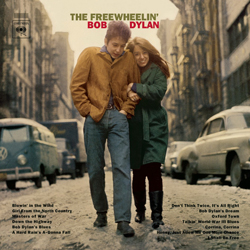 DD: That’s right. Dylan is actually the James Dean of the 1960s. American culture shifts often after a cataclysmic war such as World War II. It needs a new persona, a new character to identify with. The new sensibility—the sensibility that James Dean projected—was a teenage sensibility. The teen culture erupted with James Dean and the year after his death, of course, Elvis Presley came along who was another admirer of James Dean. Elvis was also another idol of Dylan, oddly enough. And interestingly so, Dylan basically serves the same James Dean function in the 1960s. There was all this turmoil and everything happening and here was somebody who embodied all of these other personas. Dylan embodied a James Dean-like quest for stardom. He was unabashedly ambitious with folk music, which represented authenticity. Eventually rock music would serve the same change of persona function. Rock music’s secret function was its subtext, which was “we can change the world.”
DD: That’s right. Dylan is actually the James Dean of the 1960s. American culture shifts often after a cataclysmic war such as World War II. It needs a new persona, a new character to identify with. The new sensibility—the sensibility that James Dean projected—was a teenage sensibility. The teen culture erupted with James Dean and the year after his death, of course, Elvis Presley came along who was another admirer of James Dean. Elvis was also another idol of Dylan, oddly enough. And interestingly so, Dylan basically serves the same James Dean function in the 1960s. There was all this turmoil and everything happening and here was somebody who embodied all of these other personas. Dylan embodied a James Dean-like quest for stardom. He was unabashedly ambitious with folk music, which represented authenticity. Eventually rock music would serve the same change of persona function. Rock music’s secret function was its subtext, which was “we can change the world.”
JWW: How does Buddy Holly fit into all this? Dylan has a strange fixation with Holly. As a young man, Bob went to a Buddy Holly concert and he actually thought that he and Buddy Holly had connected somehow. Holly, as you know, had a big influence on other groups like the Beatles. How does Buddy Holly figure in with the complexity that is Bob Dylan?
DD: Buddy Holly had a different influence on the Beatles. Buddy Holly represents the group which was a new phenomenon in rock-and-roll when the Beatles were coming onto the scene. Throughout the 1950s, there were singers who had bands, but they weren’t identified with those bands. Buddy Holly and the Crickets were a unit. They finally quarreled and broke up, but their inheritance for the 1960s was the rock group—the rock group as a sort of a gang. For Dylan, Buddy Holly’s influence was that he combined basically folksy tunes with a rock rhythm. Moreover, Holly was the first identifiable teenage rock star. There was Eddie Cochran. There was Gene Vincent. But none of these people were like Holly. There was something more accessible about Buddy Holly.
JWW: Unlike Elvis.
DD: Elvis to most people was really an oddity. He was a kind of southern hillbilly or an alien character as far as a northern, middle-class kid such as Dylan was concerned. Buddy Holly was somebody that you could imitate in the same way as James Dean. You could put on a red windbreaker and jeans and look sullen and angry and you were James Dean overnight. But Elvis was something else. The gold suits and the whole country western oddity of Elvis was harder to mimic.
JWW: The thing that drew me to Dylan in the Sixties was he saw right away that there was an incestuous relationship between authoritarianism, social evils, militarism, materialism and the corporate state. Dylan, whether he was mimicking James Dean or Woody Guthrie, was speaking to that in those early songs and even into his electric phase.
DD: Yes. Absolutely. Dylan came to Greenwich Village with all these early songs. They come out of a genuine impulse. In fact, his first album was marvelous, but his first album was also a failure and Dylan, although he denies it, was extremely ambitious. There is a definite element of opportunism in his involvement with the protest movement. I don’t mean he didn’t believe in what he was saying, but there are many songs that he subsequently admitted he wrote because that was what people were looking for.
JWW: But it had an unintended effect. Dylan helped create that great resistance movement we saw in the 1960s.
DD: Absolutely. With “Blowin’ in the Wind” (aside from the fact that it really doesn’t say anything) Dylan had hit upon a very successful formula—that is, to take these old songs and add a political impetus to them. But, of course, eventually the popularity of this new kind of protest—folk rock and/or protest song—actually destroyed the folk music that had created them. Dylan was very astute about not repeating himself because his innate paranoia has to do with his insecurity about being Jewish and coming from this obscure mining town.
JWW: I don’t think he wanted to be pigeon-holed.
DD: Exactly.
JWW: It was 1963 and Dylan was honored at the Thomas Paine Awards. Bob was receiving a civil liberties award, but he vented with a drunken rant and drew the audience’s wrath.
DD: That was so amazing. Dylan actually identifies with Oswald.
JWW: Yes. Exactly. But Dylan was showing his left-leaning fans that he was not going to be pigeon-holed. Then in 1964 he tells Nat Hentoff, “I don’t want to write for people anymore. I don’t want to be a spokesman. From now on I am going to write inside of me.” So after that, things change. Next up we get Highway 61 Revisited and Blonde on Blonde. Dylan becomes, as you show in your book, our Electric God.
DD: Well, actually Dylan combines that with a messianic presence. Dylan is basically, in a way, the last great flowering of Beat literature. He took the Beats and the source of the Beats inheritance—which is Rimbaud—and he put that to rock music. It was an unbelievable fusion.
JWW: As you note in your book, Dylan made rock music literature.
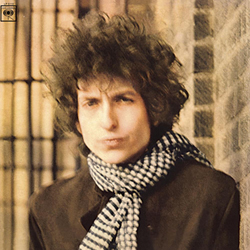 DD: The diehard Dylan fans call Bringing It All Back Home, Highway 61 and Blonde on Blonde the “Holy Trinity.” And those albums are inscrutable and profound. Nobody has ever really transcended what Dylan did.
DD: The diehard Dylan fans call Bringing It All Back Home, Highway 61 and Blonde on Blonde the “Holy Trinity.” And those albums are inscrutable and profound. Nobody has ever really transcended what Dylan did.
JWW: What about the effects of drugs in all this? The 1960s was awash with LSD, amphetamines and so on. Drugs, as some argue, open alternative views of reality. Wasn’t Dylan affected by drugs as he moved on through his journey?
DD: Absolutely. Peter Stampfel of the Holy Modal Rounders, who was a good friend of Dylan’s, said it was basically amphetamines that led to Dylan’s breakthrough.
JWW: And Dylan also lived an alternative reality in who he really was.
DD: Yes. What happened is he was exposed in Newsweek as not being who he seemed to be. His name wasn’t Bob Dylan. It was Robert Zimmerman. He hadn’t grown up in the circus or with the Sioux Indians or all these stories he made up.
JWW: He wasn’t an orphan.
DD: He wasn’t an orphan. All these crazy, wonderful stories.
JWW: Dylan’s father said that his son’s persona was an act.
DD: Right. He said that his son was a corporation or something like that. In my book, Who IsThat Man, what I emphasize is that to take his mythology as seriously as the facts of his life is a mistake. As Dylan says in the Martin Scorsese documentary, No Direction Home, he may have been born from the grooves in some 78 records that his parents found when they moved into a new house. He acted as if he were a foundling. Dylan basically functioned as someone who lived between the fictions he created and the actual situations of his life. The problem with many Dylan biographies is you can’t just treat him like he did this and he did that. You cannot treat Dylan’s life the way you would George Washington or Barack Obama.
JWW: Dylan has created a myth around himself.
DD: That’s right, and that myth is as potent as any literal fact about himself. Dylan is really that character. Not only are albums like Freewheelin’, Highway 61 and Blonde on Blonde such classic creations, but the person singing them, with the curly hair, the shades, the polka dot shirt and the whole thing is also a classic creation. Look at the famous interview that he did with Nat Hentoff. It is fantastic. I mean, we had never heard anybody except maybe the Beatles who had this wonderful humorous sort of surreal way of talking. For example, John Lennon was asked, “How do you find America?”
JWW: —and Lennon responded, “Turn left at Greenland.”
DD: Yes. That was great, but Dylan took this to a high art. You can see this in Dylan’s book Tarantula. He is incredibly verbal. He is almost supernaturally talented in spinning words and images, and nobody had ever heard anybody at a press conference do this except maybe Marlon Brando. If you listen to Marlon Brando’s early interviews, he does the same thing. Like Brando, when Dylan was asked direct questions, he gave very elusive, funny responses to them.
JWW: In June 1967, the Beatles debuted Sgt. Pepper’s Lonely Hearts Club Band. The reaction to that album was phenomenal. As one writer notes, “The world stopped and listened.” The reviews of the album were astounding in that the critics said the Beatles had created rock music as art. At the same time, however, Dylan was getting ready to release John Wesley Harding, which was juxtaposed against the psychedelic electric sound of the Beatles. Was Dylan looking for guidance? Was he doing that on purpose? What do you think?
DD: I think what happened was he was on a suicidal course in 1966. He was obviously taking a lot of amphetamines. He was not sleeping. But Dylan always had a basic compass to his life that came from his family where he realized he had to stop or he was going to die. John WesleyHarding came from the times when he supposedly stopped doing amphetamines, stopped roving around the world and settled in Woodstock. If you look at the pictures of him in Woodstock, it is almost as if somebody had kidnapped him.
JWW: It looks like he grew up in 1860.
DD: Yes, he looks like a rabbinical student. I think that he had to reconnect. Dylan realized before anyone else that the 1960s had basically run its course. He no longer had the ambition of transcending rock or folk music as did of a lot of singers of the 1960s. The Sixties had exhausted itself, and it had now become pretentious.
JWW: Do you think that led to his religious conversion—that huge schismatic conversion that happened in 1978? Dylan thought it was real, don’t you think?
DD: Oh, absolutely. There is no question about it. John Lennon, Keith Richards and others made some snide remarks about it, but Dylan was totally genuine. Dylan’s marriage broke up and he was suddenly adrift. He had always basically focused his emotional life on women and love. When that fell apart, he desperately needed something just as overwhelming to take its place.
JWW: And that was God.
DD: Yes, God. Dylan’s religious, right-wing rants during that time are nutty, and there is a lot of nonsense in them. However, people who saw him in concert during his Christian period have said he was at his absolute intensity, and those songs are still great.
JWW: Slow Train A Coming is a good album.
DD: That is a great album, and the two that followed were good. I know people over the years who apologize for Dylan when he came out with lame albums. If, however, an unknown person had produced them, they would say that they were unbelievably talented. Slow Train is great. But of course, Slow Train was preceded by Street Legal which is the first time Dylan used a gospel chorus and apocalyptic imagery.
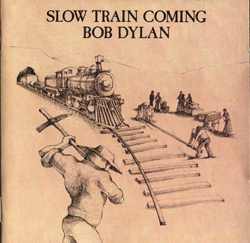 JWW: Dylan seems to be obsessed with the apocalypse.
JWW: Dylan seems to be obsessed with the apocalypse.
DD: Dylan has always been a possessed character, and I think the religious phase is something that was always there. I mean, he spoke of “flesh-colored Christs that glow in the dark” in “It’s Alright, Ma (I’m Only Bleeding).” That kind of conviction was always there. He simply took it a lot more literally in his Christian phase. And he sang one of those songs in his recent China tour.
JWW: You have closely studied Dylan. What are his religious beliefs? Didn’t he slide back into Judaism?
DD: He was involved with Hasidic sects in the early seventies. The problem with the Christian thing for Dylan was that he felt it was a betrayal of who he was and where he had come from. All kind of apocalyptic themes run through Hasidic beliefs. In a profound sense, it is basically not all that different from apocalyptic Christianity.
JWW: Dylan had a heart attack in 1997. I actually saw him perform live right after that. Before that, I had seen a few concerts where he mumbled. You could not understand a thing he was saying. But in that 1997 concert, he sang everything clearly. He took roses on stage. He did a little dance. He smiled. Do you think his heart attack changed anything about him?
DD: Dylan is a collective entity. The reason that Dylan is so confusing now is that Dylan is partly him, partly his creation and partly what we have made of him. Near the end of my book, I invoke this idea of the group soul. This comes from the way certain insect colonies act. All the insects in the colony function as different parts of the same body and mind. They all function as one sort of unit. This is somewhat true of any rock concert. However, with Dylan, it’s more so because he has siphoned off religious apocalyptic political ideas that all fuse together and fuse us together.
I have seen Dylan concerts in recent years that were just horrible. I was really appalled at Cooperstown when he sang virtually every one of his songs, including “Just Like A Woman.” These kids standing in the audience, 18-year-old kids, were saying, “Isn’t he great?” I didn’t say anything to them, but I just was horrified. Then, in 2011, I went to Bethel which is the site of the original Woodstock concert. His performance was unbelievably good. He had a kind of claw-like attack to the piano keys, but the concert was unbelievably inspiring. Everybody was tuned in, and I think he reacts to that. I think that when he comes on stage, he reacts to the audience. At Bethel, everyone in the audience—old and new fans—were fused together. We all identified with him because, in a way, he is us. We all think of the ideal human being, and it is like Thomas A. Kempis’ The Imitation of Christ. Whether it is a religious image or a popular image, we always look for the person that we think is the exemplary character who embodies our best thoughts, impulses and emotions. I think that is who Dylan is. He is us.
JWW: How do you square the Dylan who sang about “flesh-colored Christs that glow in the dark” and the Dylan who did a Victoria’s Secret commercial?
DD: Dylan wasn’t a poor boy in the way that a lot of rock singers were, but he has an absolute obsession with money. Why did he do the film Streets of Fire? He asked an actress friend of his to be in it and she said, “Why would I want to be in such a horrible thing”? He reportedly said, “Well, it’s a million dollars.” People say every time Dylan puts out a record he buys a new apartment building. He is very …I don’t know…
JWW: Very American.
DD: Yes. Very American in the same way that he idolizes Woody Guthrie and Dion and Elvis and Liberace at the same time. He is a very promiscuous character, and he is also very American. Dylan believes in the whole idea of success in the same way that, for instance, James Dean and Hank Williams did.
JWW: Or Barack Obama.
DD: Or Muhammad Ali and so on. They don’t see any difference between success and financially supplementing their talent. The Beatniks and the abstract expressionists and the folk people disdained fame and money. Dylan embraces it all. Money is plasma in American society.
JWW: In your book, you say Dylan is basically a charlatan and that America is a fake. Explain.
DD: America is a country that we basically invented. It is very different from Europe. We are always pretending to be something we are not. We have never really grown up. We are these teenagers who are perpetually acting out a fantasy. In fact, that fantasy and charlatanism is the basis of American culture. It is the basis of the music. Writing songs is totally make-believe charlatanism. Every time you get on stage, you are pretending to be someone. The movies are our kind of dream world, our fantasy, our charlatanism. There are people up there on the screen pretending to be Alexander the Great or Thomas Edison, and they are fakes. However, that is the brilliance of American culture and its profound belief in its own charlatanism.
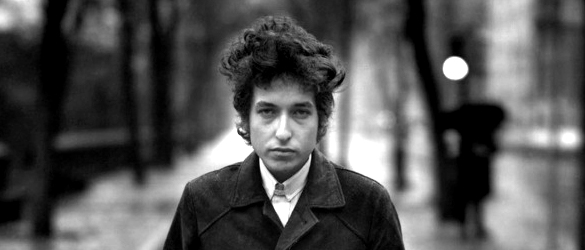
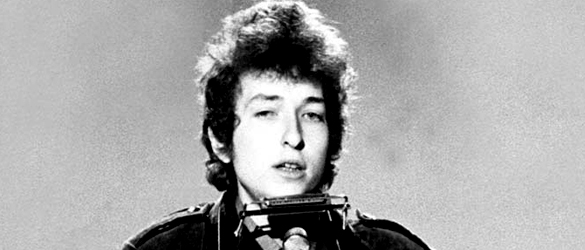
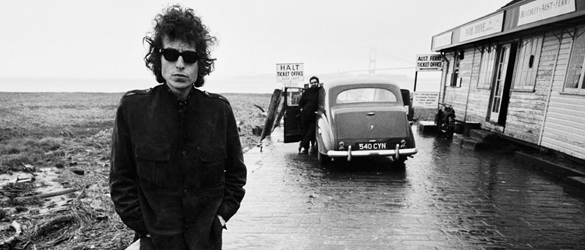
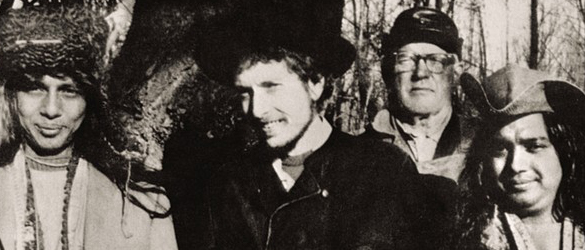
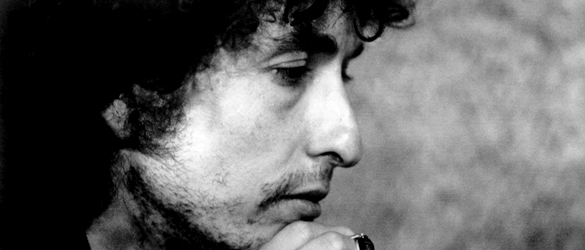
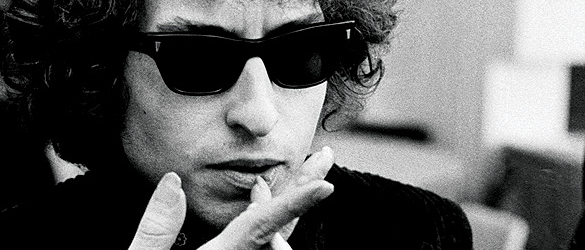
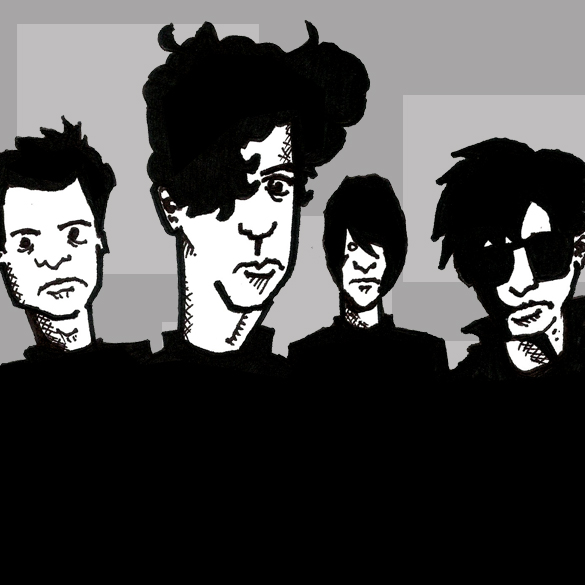
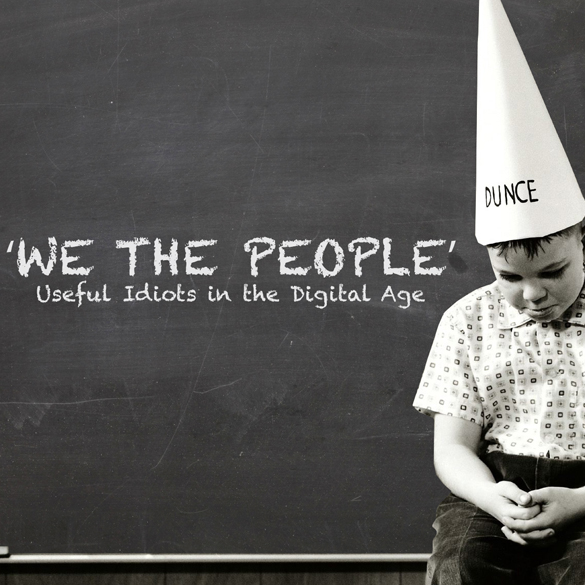

I knew him as Bobby Zimmerman. I was working in a law office with a black man named Bob Walters (he liked to be known as R. Archibald Walters). He was the man that introduced me to Bobby and he also played the saxophone. In 1957 we used to meet on Macdougal Street and Bobby and I were the only white guys among about 6 friends and we went by cabs to the Paladium (a Latin dance emporium)and I remember Bobby wondering if he would get in since they served liquor and he was too young. We also went to offices behind Carnegie Hall because there were parties happening.
I remember Bobby as very quiet and unassuming and I had no idea of talent he had as a musician despite the fact that the guys we were with were musicians. Needless to say I am very glad for his success.
I’m on your side. But when I read things like this:
“I mean, we had never heard anybody except maybe the Beatles who had this wonderful humorous sort of surreal way of talking. For example, John Lennon was asked, “How do you find America?”
JWW: —and Lennon responded, “Turn left at Greenland.”
DD: Yes. That was great, but ….”
“Great?” I’m sorry but that was zero great. Clever 12-year-olds do as well 10 times a day. You can call that great only if you are ignorant of greatness, or more likely in this case, reminisce the rapture of being stoned.
Have these people never heard of Dorothy Parker or any of the people in her Rolodex?
Very interesting article, Mr. John W. Whitehead! You are one of the many who eagerly delights in writng about Bob Dylan! I’m not saying that Bob Dylan isn’t a genius, but the credit is not his, it is our Master of the Universe. So, although you can write pages of Bob’s accomplishments etc, it is what one does in life for others, the kindnesses the sharing, the helpfulness that puts all of us humans in a different catagory than animals or plant life!
Have a Good and Prosperous New Year!
Rivkah Bergman